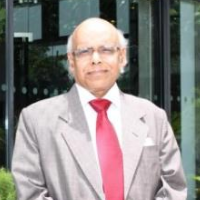India must prioritise manufacturing of mobiles, telecom & computing equipment
Dr. DK Srivastava, Chief Policy Advisor, EY India, proposes a three-phase roadmap for the public sector and private sector to strengthen India’s manufacturing prowess in line with evolving technologies and changing global trends.

IBT: What are the major factorat make India’s attractiveness as a manufacturing destination most compelling in the present context?
Dr D. K. Srivastava: India has a relatively low incremental to capital to output ratio in a number of manufacturing sectors, particularly with respect to sectors such as electronic goods, telecommunication equipment, automobiles and pharmaceuticals. The cost of skilled labour is also highly competitive in India. The major constraints relate to availability of infrastructure and unduly elaborate regulatory environment.
India has a strong immediate potential to ramp up manufacturing and attract investments in sectors like electric vehicles, pharmaceuticals and electronic goods, computer components, mobile components and laptops.
IBT: What will it take for India to attract more high value and technology intensive industries for manufacturing investments in the coming years?
Dr D. K. Srivastava: Emphasis should be on production of defence equipment including aeroplanes, drones with civil and defence applications, robotics, artificial intelligence-based weapons and advanced radars. These are sectors where advanced technology is required and many of these should be taken up with selected foreign countries who have specializations in specific areas.
High-end medical equipment including ventilators and other COVID-19 related equipment may also have high external demand for some more years and may offer considerable export potential.
IBT: What are the perception issues that India faces in the minds of foreign investors when it comes to manufacturing? How can they be better addressed?
Dr D. K. Srivastava: India has become competitive in the last few quarters with CIT reforms and reforms of indirect taxes, creation of genuine All India Market for Agricultural Goods and state-level initiatives regarding reform of land and labour laws. The continuing adverse perception should be addressed through effective information campaign amongst potential investors.
IBT: In light of the reverse migration that has occurred in the recent months, do you see opportunities for a more geographically diversified manufacturing base? How can this be facilitated and brought to fruition?
Dr D. K. Srivastava: Reverse migration has resulted in a significant portion of semi-skilled and unskilled labor force going back to states like Uttar Pradesh, Bihar, Odisha, Rajasthan and Madhya Pradesh. State level policies in these states should be revamped to attract industry by reforms of land and labor laws, investment in state level infrastructure and identification of industries, where setting up of clusters may give economies of scale. Some states have taken the initiative to showcase facilitation of specific industries in their state.
For example, Uttar Pradesh is showcasing facilitation of defence-related production. Instead of focusing on densely populated urban areas, investment should be geographically located more in urban peripheries, which have an interface with rural areas and/or urban-rural corridors. Such a geographical strategy can combine the benefits of proximity to urban areas with the availability of labour at relatively low costs.
IBT: How do you view India’s progress towards Industry 4.0, and towards becoming a global hub for innovation in manufacturing?
Dr D. K. Srivastava: In order to become a global hub for innovation, private and public sectors will have to come together to invest in R&D. India’s R&D expenditure will have to be increased several folds before innovation in manufacturing can take off and find a place in the global scenario for innovation. India may have to partner with specific countries, such as Israel and Taiwan, which have a high reputation in innovation, in specific areas, to accelerate the process.
IBT: What roadmap should India follow over the coming decade to improve its export competitiveness in manufacturing and bring down the trade deficit?
Dr D. K. Srivastava: The roadmap may be divided into three broad stages separately for private sector and public sector. As far as the public sector is concerned, in the first two years India should invest heavily in infrastructure as per the plan of the National Infrastructure Pipeline so that Indian infrastructure is brought on par with the advanced countries.
The next two years should focus on three sectors, namely defence production, health and education. Beyond this, the public sector may focus largely on space and the high seas, where required investment is very large and lumpy, positive externalities are high and initial returns are low. This public sector investment can potentially offer a platform, which can be utilized by the private sector also in these sectors.
For the private sector, the three broad stages may be defined as follows. In the first two years, focus should be on pharmaceuticals, so that capacity is created for overcoming the COVID-19 pandemic as well as any future pandemic. In the next two years, it should be ensured that domestic production should suffice for domestic demand with respect to mobiles, telecommunications and computing equipment including large servers. Once India becomes self sufficient in these, the future years can be devoted to robotics, artificial intelligence, self-driven automobiles and drones and space technology.

A noted economist, Dr. D. K. Srivastava is an Honorary Professor at Madras School of Economics and Member of the Advisory Council to the 15th Finance Commission.













Leave a comment